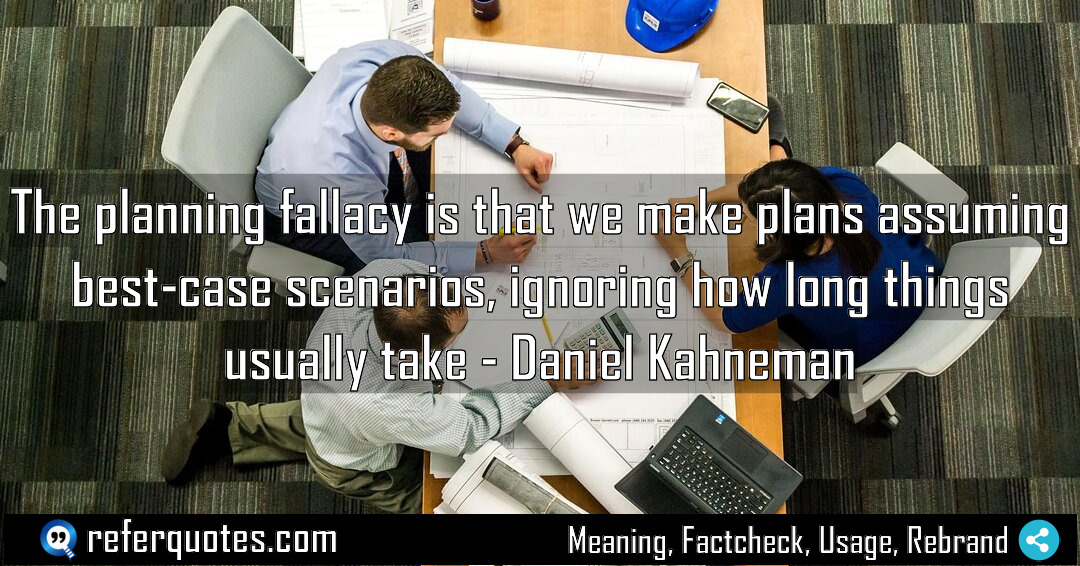You know how we make plans assuming best-case scenarios? That’s the planning fallacy in a nutshell. It’s why we’re always running late and projects blow past deadlines. We’re wired to be optimistic, even when history tells us otherwise.
Share Image Quote:Table of Contents
Meaning
It’s the systematic and predictable cognitive bias where we confidently create plans based on a best-case scenario, completely ignoring the statistical reality of how long similar tasks have actually taken in the past.
Explanation
Let me break it down for you. This isn’t just about being a little optimistic. It’s a hardwired glitch in our thinking. Our brain, specifically the fast, intuitive part, concocts a neat, clean story of how a project will go. It’s a perfect story. No traffic, no sick days, no unexpected client feedback loops, no technology hiccups.
And here’s the killer part: we know we’ve been burned before. We know the last three projects like this took six weeks, not four. But in the moment of planning, we dismiss that as irrelevant. We tell ourselves, “Oh, but this time it will be different.” That’s the fallacy. It’s the triumph of hope over experience, and it costs businesses and individuals billions in wasted time and resources.
Quote Summary
| Context | Attributes |
|---|---|
| Original Language | English (3668) |
| Category | Career (192) |
| Topics | bias (25), planning (22), time (59) |
| Literary Style | analytical (121) |
| Emotion / Mood | realistic (354) |
| Overall Quote Score | 83 (302) |
Origin & Factcheck
This concept was solidified by Daniel Kahneman and his colleague Amos Tversky in the 1970s, with Kahneman popularizing it in his 2011 bestseller, Thinking, Fast and Slow. It’s a cornerstone of behavioral economics. You might sometimes see it misattributed to others, but the research and the term’s prominence in this context is definitively theirs.
Attribution Summary
| Context | Attributes |
|---|---|
| Author | Daniel Kahneman (54) |
| Source Type | Book (4032) |
| Source/Book Name | Thinking, Fast and Slow (54) |
| Origin Timeperiod | 21st Century (1892) |
| Original Language | English (3668) |
| Authenticity | Verified (4032) |
Author Bio
Dr Daniel Kahneman transformed how we think about thinking. Trained in Israel and at UC Berkeley, he built a career spanning Hebrew University, UBC, UC Berkeley, and Princeton. His partnership with Amos Tversky produced prospect theory and the heuristics-and-biases program, culminating in the Nobel Prize in Economic Sciences. He engaged broad audiences through bestselling books and practical frameworks for better decisions. He continued writing and advising late into life, leaving ideas that shape economics, policy, medicine, and management. If you want to dive deeper, start with the Dr Daniel Kahneman book list and explore his enduring insights.
| Official Website
Where is this quotation located?
| Quotation | The planning fallacy is that we make plans assuming best-case scenarios, ignoring how long things usually take |
| Book Details | Publication Year: 2011; ISBN: 9780374275631; Latest Edition: Farrar, Straus and Giroux, 2013; Number of pages: 499. |
| Where is it? | Part III: Overconfidence, Chapter 23: The Outside View, Approximate page 247 (2013 edition) |
